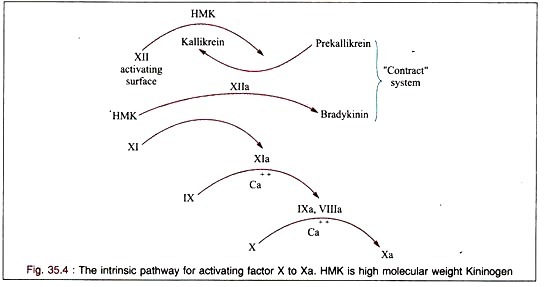In this article we will discuss about the replication cycle of rabies viruses.
The infection process is initiated with adsorption of virus on the host cell. Interaction takes place between spike G protein and specific cell surface receptors. It results in fusion of the rabies virus envelope with the host cell membrane. After adsorption, the virus penetrates the host cell and enters the cytoplasm by pinocytosis through clathrin-coated pits.
The virions aggregate in the large endosomes i.e. cytoplasmic vesicles. The viral membranes fuse to the endosomal membranes, and viral uncoating is carried out. This causes the release of viral RNP into the cytoplasm. Because the rabies virus consists of a linear single- stranded (-) sense RNA genome. Soon the genomic RNA is transcribed into mRNAs so that virus replication must be started.
An L gene of the virus encodes an enzyme, polymerase which transcribes the genomic strand of rabies RNA into leader RNA and five capped and polyadenylated mRNAs. The latter are translated into proteins. Translation occurs on free ribosomes in the cytoplasm, which synthesizes the N, P, M, G and L proteins.
Synthesis of the G protein is initiated on free ribosomes, but its complete synthesis and glycosylation (i.e. processing of the glycoprotein) process occurs in the endoplamsic reticulum (ER) and Golgi bodies. The switch from transcription to replication is regulated by the intracellular ratio of leader RNA to N protein.
Replication of viral genome begins upon activated of this switch. The first step of replication is the synthesis of full-length copies of (+) sense ssRNA. When replication is switched on, RNA transcription takes place uninterrupted; even stop codons are ignored.
The viral polymerase enters a single site on the 3′ end of the genome, and proceeds to synthesize full-length copies of the genome. These (+) sense ssRNA of rabies virus acts as templates for synthesis of full-length negative strands of the viral genome.
At the time of viral assembly, N-P-L complex is formed. I This complex encapsulates negative- stranded genomic RNA to form the RNP core. The M protein forms a capsule or matrix around the RNP. The RNP-M complex migrates to an area of the plasma membrane containing glycoprotein inserts and the M-protein initiates coiling.
The RNP-M complex binds to glycoprotein, and the B complete virus buds from the plasma membrane. There is preferential viral budding from plasma membranes within the central nervous system (CNS). In the salivary glands, virus buds from the cell membrane into the acinar lumen. Viral budding into the salivary gland and virus-induced aggressive biting-behaviour in the host animal maximize chances of viral infection of a new host.
